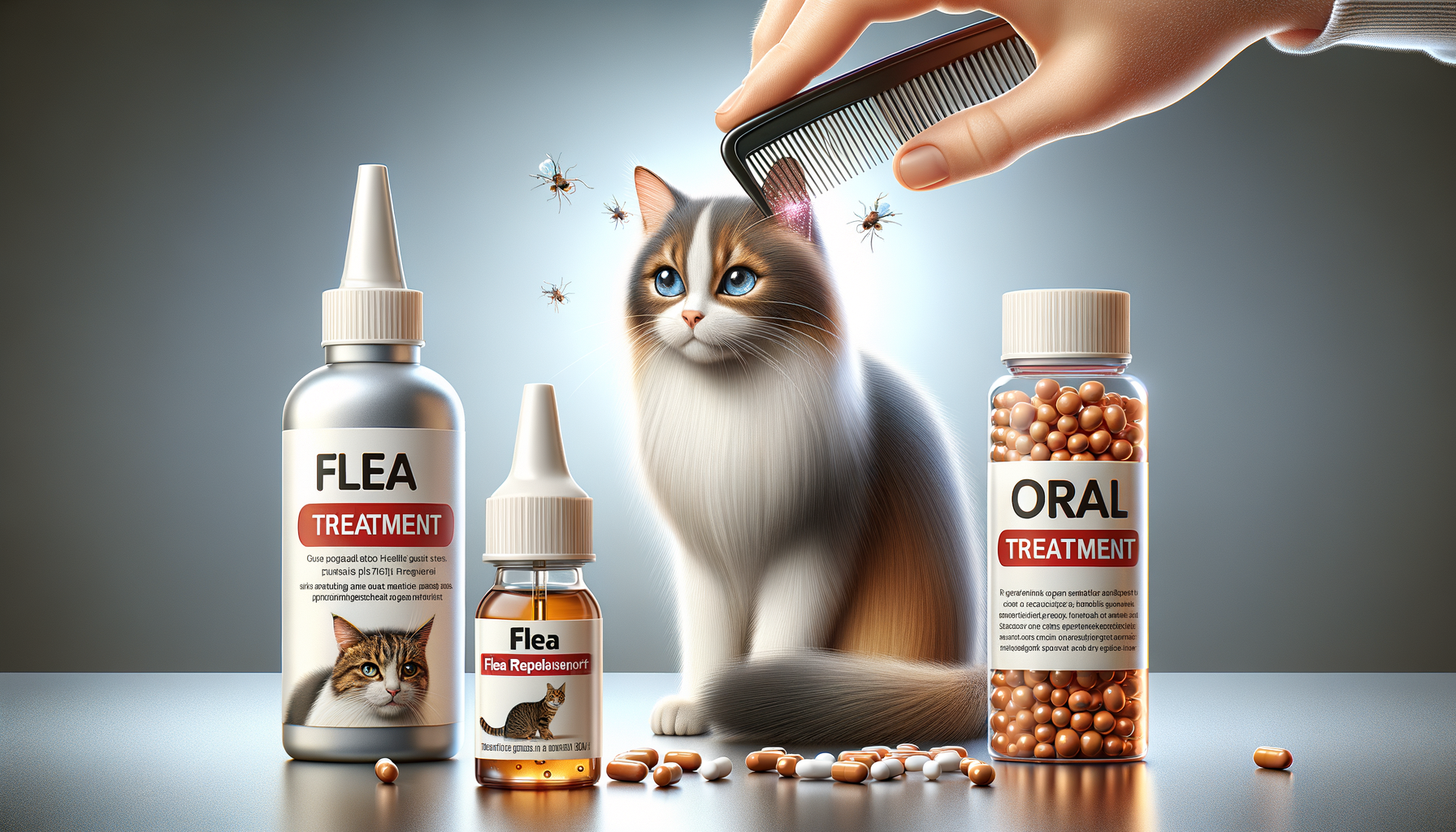Understanding Flea Infestations in Cats
Flea infestations in cats are not just a nuisance; they can lead to significant health issues if not addressed promptly. Fleas are small, wingless insects that feed on the blood of their hosts. In cats, a flea infestation can cause itching, irritation, and in severe cases, lead to skin infections or allergic reactions. Moreover, fleas are carriers of tapeworms and certain diseases, which can be transmitted to both cats and humans. Understanding the life cycle of fleas is crucial in controlling their spread. Fleas go through four stages: egg, larva, pupa, and adult. The eggs are laid on the host animal but often fall off into the environment, where they hatch into larvae. These larvae eventually spin cocoons and emerge as adult fleas, ready to infest a host. This cycle can make flea control challenging, as treatment must target all life stages to be effective.
Topical Flea Treatments
Topical flea treatments are among the most popular options for managing flea infestations in cats. These treatments are applied directly to the cat’s skin, usually at the back of the neck, where the cat cannot lick it off. The active ingredients in these treatments typically work by affecting the flea’s nervous system, leading to paralysis and death. Some products provide additional protection by repelling fleas before they bite. Topical treatments are generally easy to apply and can offer protection for up to a month. However, it’s essential to ensure that the product is specifically designed for cats, as some ingredients safe for dogs can be toxic to cats. When using topical treatments, it’s crucial to follow the manufacturer’s instructions carefully to ensure effectiveness and safety.
Oral Flea Medications
Oral flea medications are another effective option for treating flea infestations in cats. These medications are typically administered in the form of a pill or chewable tablet. They work by entering the cat’s bloodstream and killing fleas when they bite. Oral medications often provide fast relief from fleas and can be a good choice for cats that are sensitive to topical products. Some oral medications are designed to kill adult fleas, while others target flea eggs and larvae, helping to break the life cycle. As with any medication, it’s vital to consult with a veterinarian before starting an oral flea treatment to ensure it is suitable for your cat’s health and age.
Natural Flea Control Methods
For cat owners seeking a more holistic approach, natural flea control methods can be an appealing alternative. These methods often involve using essential oils, herbal remedies, or other natural substances to repel or kill fleas. For example, some cat owners use diluted essential oils, such as lavender or cedarwood, as a natural flea repellent. However, it’s important to note that not all essential oils are safe for cats, and some can be toxic. Diatomaceous earth, a natural powder made from fossilized algae, is another popular option. It works by dehydrating fleas, leading to their death. While natural methods can be effective, they often require more frequent application and may not provide the same level of protection as conventional treatments. It’s advisable to consult with a veterinarian before using any natural flea control methods to ensure they are safe for your cat.
Environmental Control and Prevention
Controlling fleas on your cat is only part of the solution; it’s equally important to address the environment where fleas can thrive. This includes regular cleaning and vacuuming of your home to remove flea eggs, larvae, and pupae from carpets, upholstery, and pet bedding. Washing your cat’s bedding in hot water can also help eliminate fleas at various life stages. Additionally, consider using flea sprays or powders designed for home use to treat areas where fleas may be hiding. Outdoor areas where your cat frequently roams should also be treated to prevent re-infestation. Prevention is key, and maintaining a regular flea treatment schedule for your cat, along with environmental control measures, can significantly reduce the risk of future infestations.




Leave a Reply